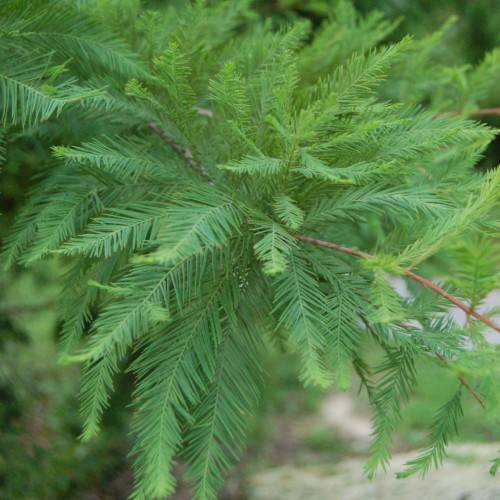
bald cypress
Taxodium distichum 'Mickelson' SHAWNEE BRAVE
Cycle:
Perennial
Watering:
Frequent
Hardiness Zone:
4 - 9
Flowers:
Flowers In Spring
Sun:
Full sun only if soil kept moist, Part sun/part shade
Soil:
Acidic, Bog, Well-drained
Cones:
Yes
Leaf:
Yes
Growth Rate:
Moderate
Maintenance:
Low
Drought Tolerant:
Yes
Salt Tolerant:
Yes
Care Level:
Medium
watering
Bald cypress (Taxodium distichum 'Mickelson' SHAWNEE BRAVE) should be watered once a week during the growing season. For the first few weeks after planting, check the soil 1-2 times per week to ensure that it does not dry out. Until the plant is established, it should be watered deeply to encourage the development of a strong root system. Once the plant is established, watering can be reduced and should only be done when the soil is dry. In periods of extreme heat or drought, additional watering may be necessary. When watering, be sure to water the entire root system. Avoid shallow, frequent watering, as this can lead to shallow root systems.
sunlight
Bald cypress (Taxodium distichum 'Mickelson' SHAWNEE BRAVE) requires plenty of sunlight and should be located in an area that receives at least 6-8 hours of direct sunlight each day. The best time of day for sunlight is during the morning and afternoon, as the sun is strongest and provides the most amount of UV light. It can also benefit from partial shade during the hottest parts of the day and is tolerant of both low- and high-light conditions. Additionally, it is important to shield the bald cypress from strong, cold winds, as this can cause it stress and damage.
pruning
Bald cypress (Taxodium distichum 'Mickelson' SHAWNEE BRAVE) is a slow-growing conifer that prefers moist soil and full sun. Pruning should be done sparingly and at the correct time of year. Pruning of this species should generally only be done in the late winter, before new growth begins in late spring. When pruning, remove only dead or damaged branches, as well as branches that are crossing or rubbing against each other. Never remove more than 1-third of the tree’s foliage at a time. Be sure to use sharp, clean pruners when pruning, and sanitize them between each use.
